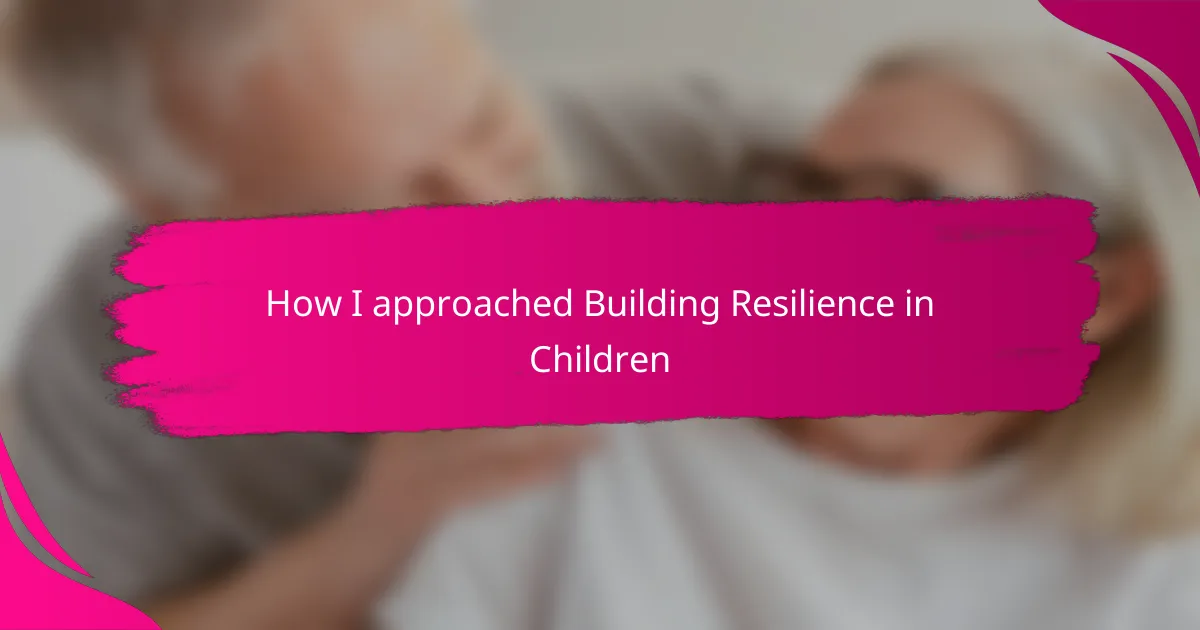Key takeaways
- Resilience in children develops through facing small setbacks rather than being shielded from difficulties, fostering courage and adaptability.
- Key parenting strategies include encouraging problem-solving, open communication about emotions, and modeling resilience through personal experiences.
- Practical activities, such as daily chores and keeping a “challenge journal,” help children build confidence and see setbacks as opportunities for growth.
- Parenting resilience requires patience, allowing children to confront struggles, and celebrating their efforts to nurture a resilient spirit.
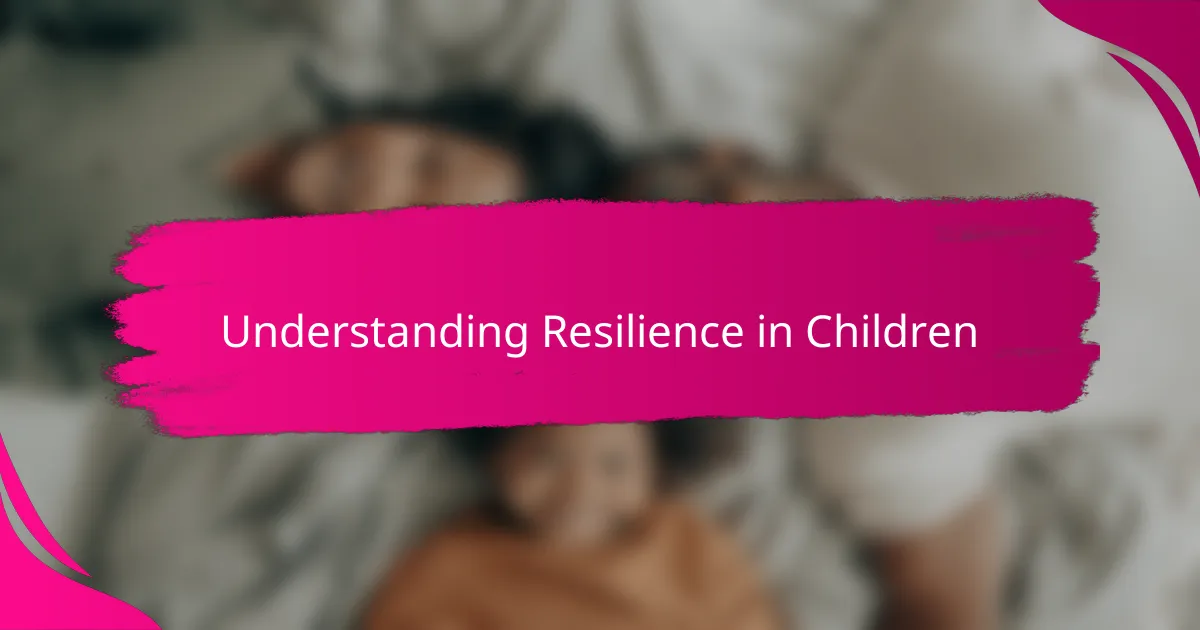
Understanding Resilience in Children
Resilience in children, to me, is more than just bouncing back from difficulties; it’s about developing the inner strength to face challenges with courage and adaptability. I’ve seen firsthand how a child’s ability to cope doesn’t solely come from protecting them from hardship but from guiding them through small setbacks in a supportive way. Have you ever noticed how a child’s confidence grows when they overcome a minor disappointment on their own? That moment of success is where resilience quietly takes root.
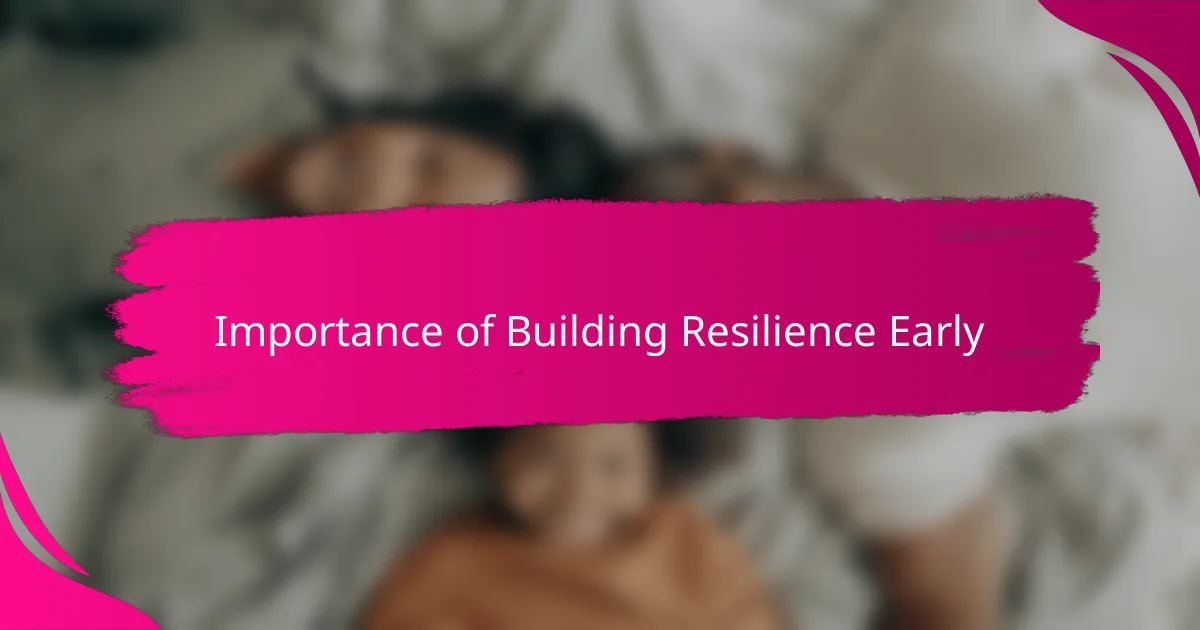
Importance of Building Resilience Early
Building resilience early feels crucial because the habits and mindsets kids develop now tend to stick with them for life. I remember watching my niece tackle a tricky puzzle; at first, she was frustrated, but giving her space to figure it out turned her tears into triumph. Isn’t it incredible how these small moments lay a foundation for lifelong confidence?
When we build resilience in children from a young age, we’re not just preparing them for tough times—we’re nurturing their sense of self-worth. I often think about how a child who learns to handle challenges gently is more likely to step into new situations with curiosity rather than fear. That early emotional toolkit makes all the difference in how they approach the world.
It’s tempting to shield kids from every setback, but I’ve found that facing manageable difficulties early on teaches them how to recover stronger. Have you noticed how children who experience some failure without judgment tend to develop grit? That grit becomes a superpower they carry well beyond childhood.
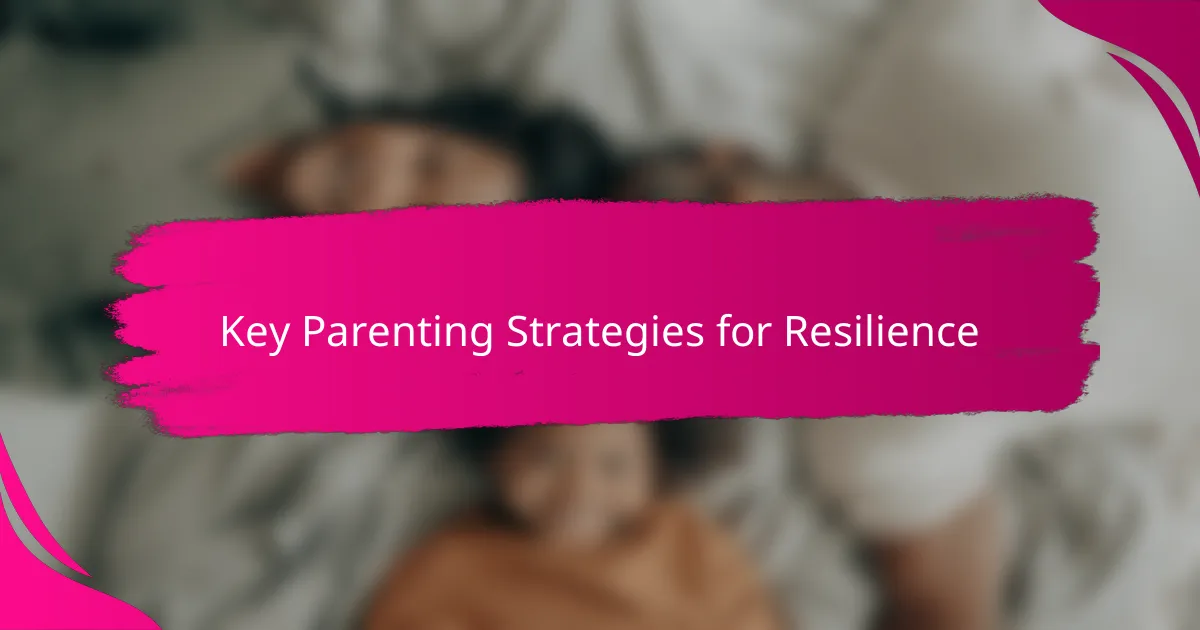
Key Parenting Strategies for Resilience
One key strategy I’ve found essential is encouraging problem-solving rather than immediately offering solutions. When my son struggled with tying his shoes, I resisted jumping in too quickly and instead guided him with patience. Have you noticed how children light up when they figure things out on their own? That sense of accomplishment builds resilience far better than quick fixes ever could.
Another approach that worked wonders was fostering open communication about emotions. I often asked my daughter how she felt after a disappointment, which helped her name and process those feelings. Isn’t it remarkable how simply talking about what’s tough can make a challenge feel less overwhelming? This emotional awareness became a tool she leaned on during harder moments.
Lastly, modeling resilience myself played a huge role. When I faced setbacks and shared my reactions honestly with my children, they learned that frustration or failure isn’t the end—it’s just part of life. Do you think children really believe in resilience until they see it lived out? I’ve seen that when they witness perseverance up close, they start practicing it themselves.
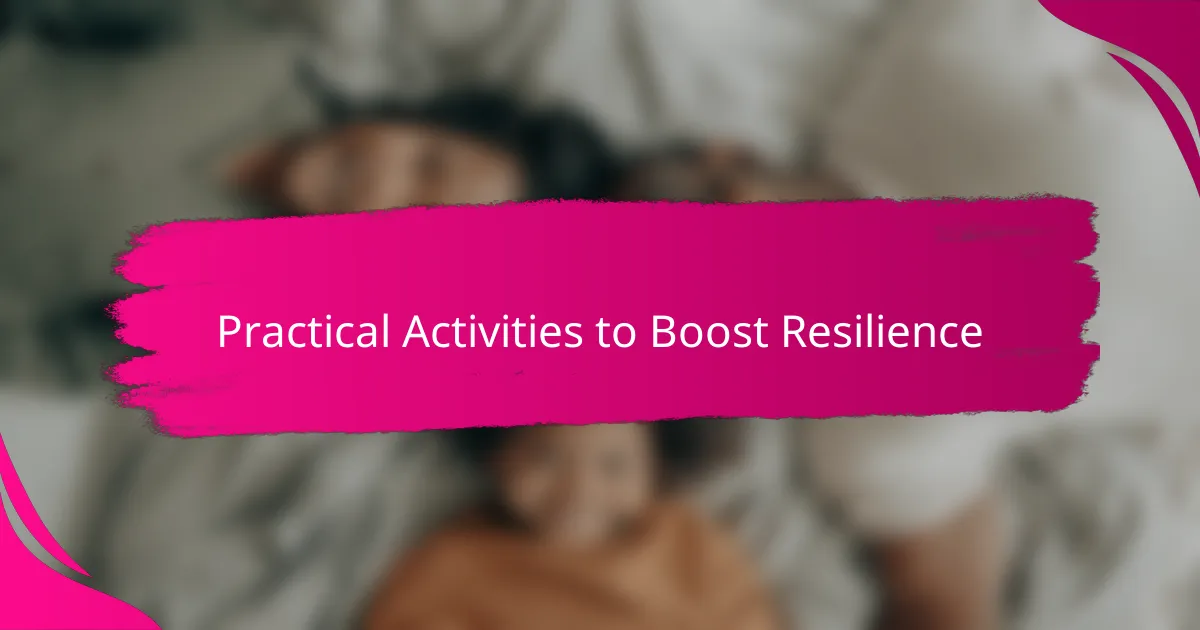
Practical Activities to Boost Resilience
One activity I found incredibly effective is involving children in daily chores where they can master small tasks step-by-step, like setting the table or organizing their school supplies. Have you ever noticed how pride lights up their faces when they complete these responsibilities independently? That sense of accomplishment quietly reinforces their resilience.
I also encouraged my kids to keep a “challenge journal” where they would jot down a problem they faced each day and how they tackled it. This simple habit helped them reflect on their growth and realize that setbacks are just opportunities in disguise. Isn’t it amazing how writing about struggles can turn them into stories of strength?
Another activity I loved was role-playing different scenarios where things didn’t go as planned, like losing a game or dealing with a disagreement with a friend. Practicing responses in a safe space gave my children confidence to handle real-life frustrations without feeling overwhelmed. Have you tried this? It’s like teaching resilience through rehearsal, and it really sticks.
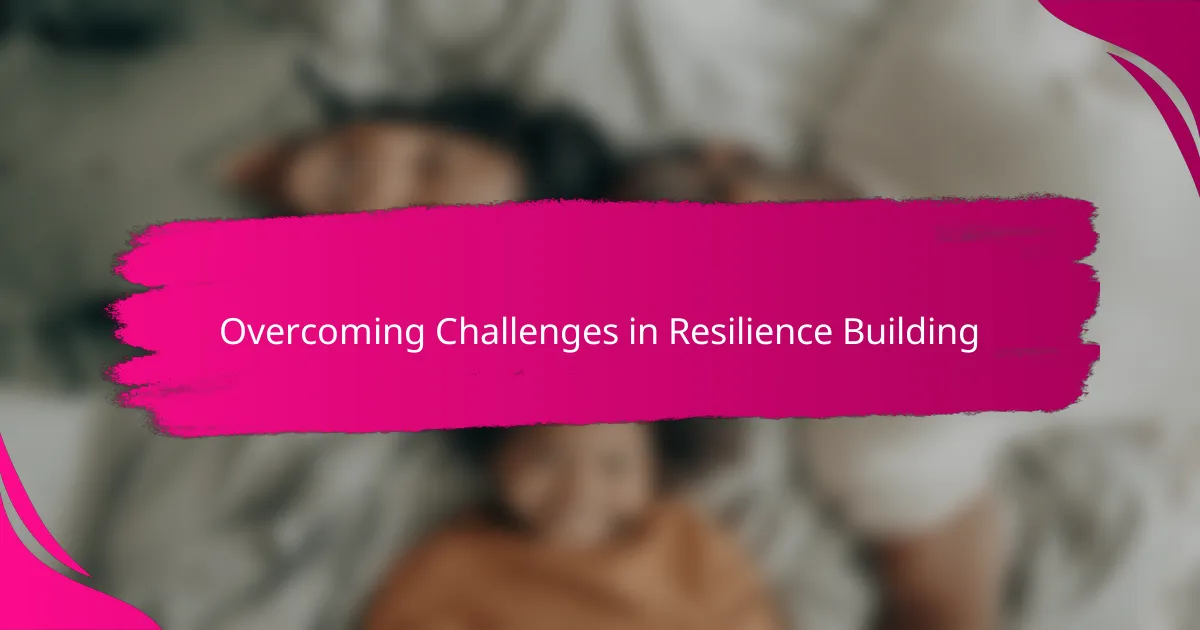
Overcoming Challenges in Resilience Building
One challenge I often faced was my own instinct to step in too quickly when my children struggled. It took conscious effort to hold back and let them face frustration head-on. Have you ever noticed how tempting it is to fix things for kids? Yet, those moments of struggle are exactly where resilience grows strongest.
Sometimes, setbacks felt overwhelming for my children—and honestly, for me too. I learned that patience and steady encouragement during these times made all the difference. When I reminded myself that discomfort wasn’t harmful but rather a stepping stone, I could support them without anxiety overshadowing the process.
I also encountered resistance when my kids doubted themselves after failing at tasks. In those moments, I made it a point to share my own stories of perseverance. Don’t you find that hearing someone else’s struggles makes your own feel more manageable? This openness helped them see challenges not as dead ends, but as detours worth navigating.
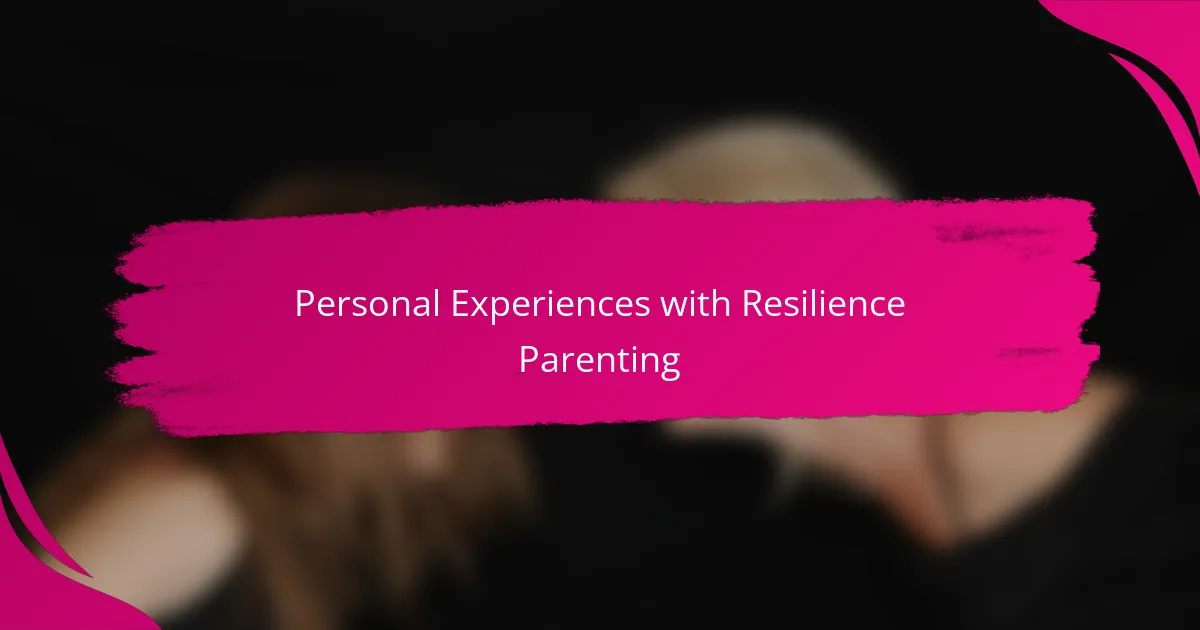
Personal Experiences with Resilience Parenting
In my journey of resilience parenting, I vividly recall a time when my daughter faced a tough moment after missing out on a school play role she really wanted. Instead of rushing to comfort her or fix the situation, I simply sat beside her and let her express her disappointment. Have you ever noticed how sometimes just being present without offering solutions can help a child process emotions deeply? That quiet support seemed to plant a seed of strength that she still carries with her.
There was also a phase when my son struggled repeatedly with learning to swim. Watching him persevere, despite frequent setbacks and frustration, was both challenging and inspiring. I realized that my role wasn’t to shield him from failure but to celebrate each attempt and encourage small wins. Isn’t it powerful how acknowledging effort instead of just outcomes builds a resilient spirit?
Reflecting on these experiences, I’m convinced that resilience isn’t something we can force; it grows in the little moments where children learn to face discomfort with our steady guidance. Have you tried stepping back just enough, allowing kids to stumble yet knowing you’re there? That balance, I believe, is the heart of resilience parenting.
